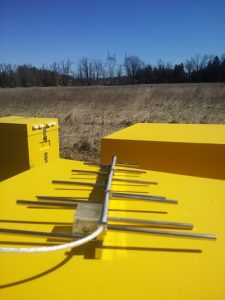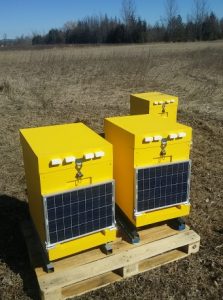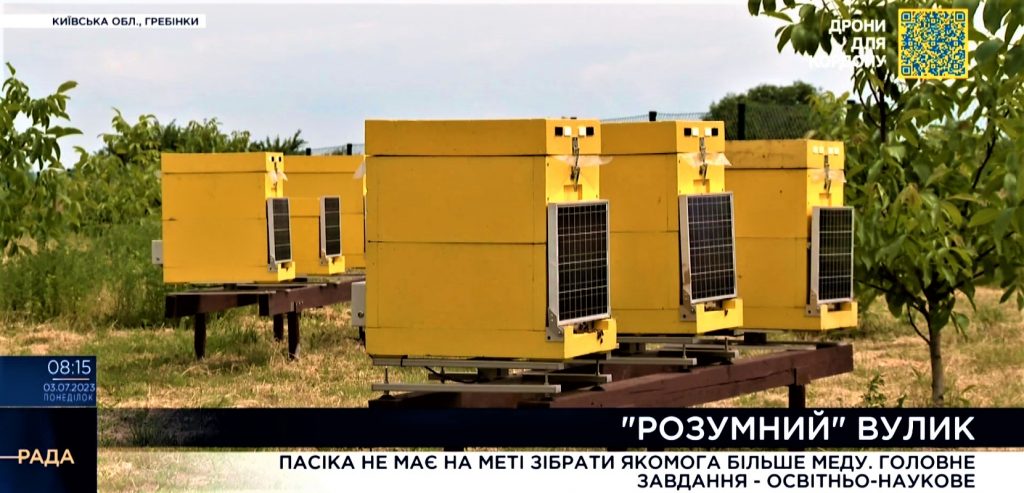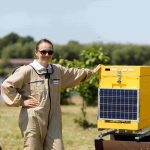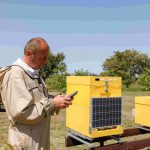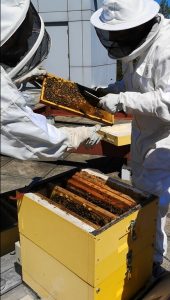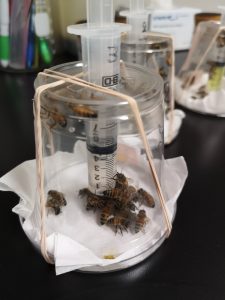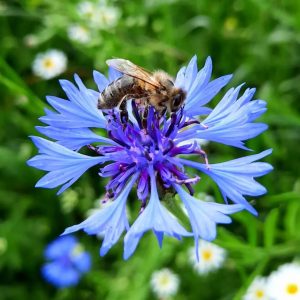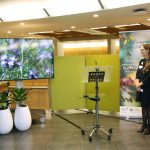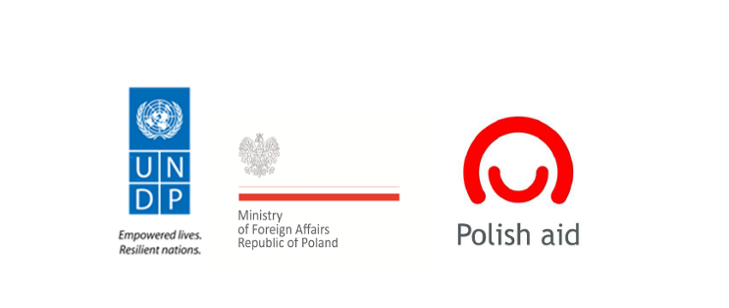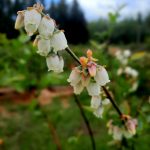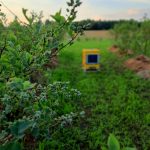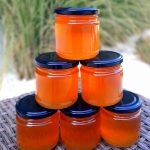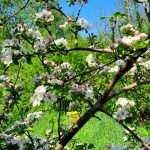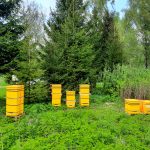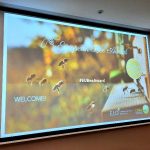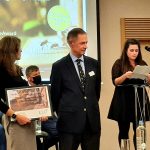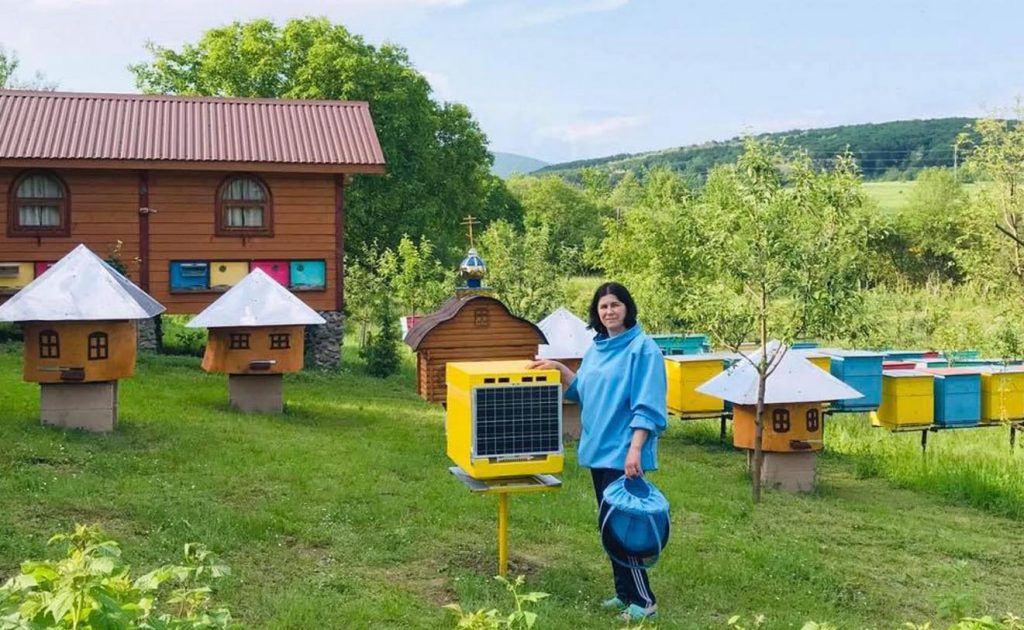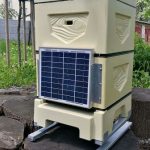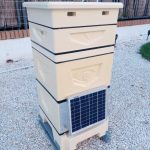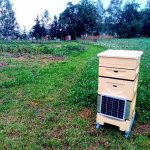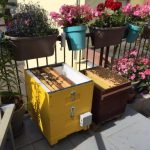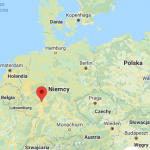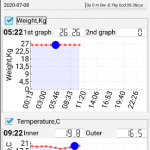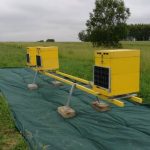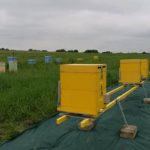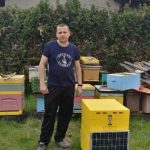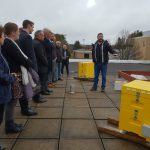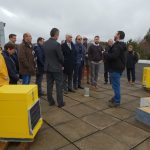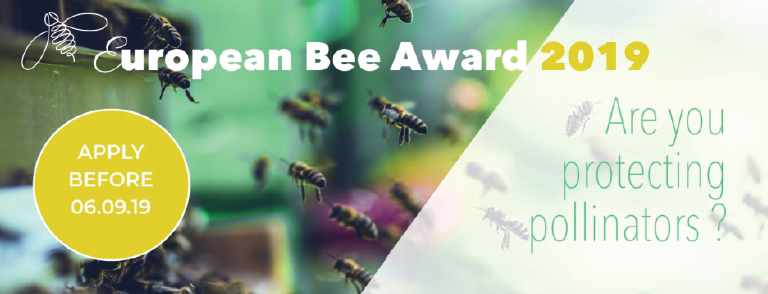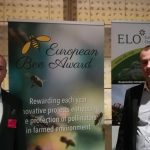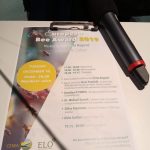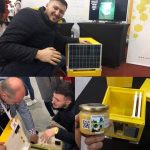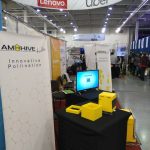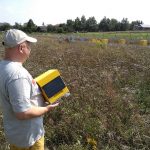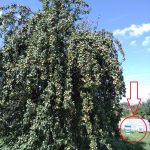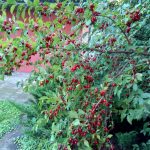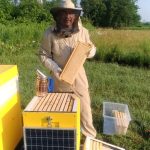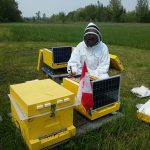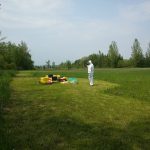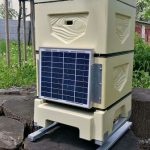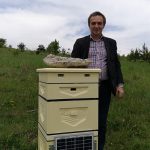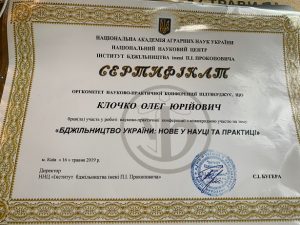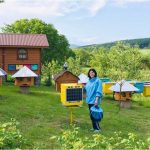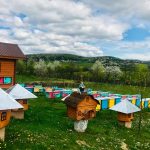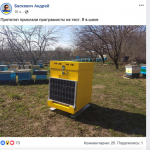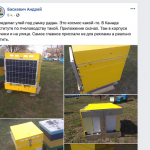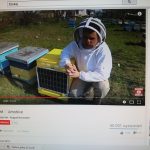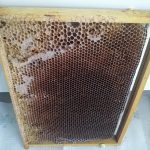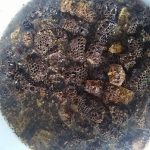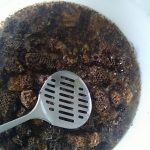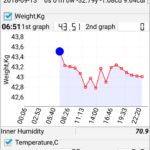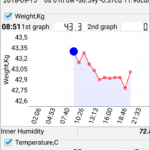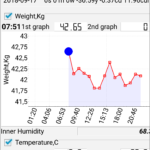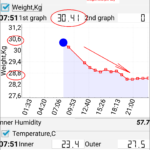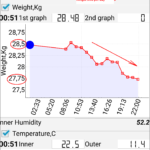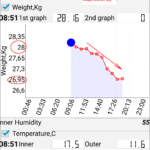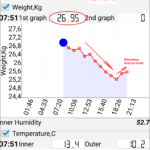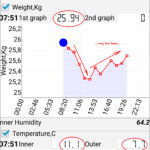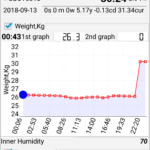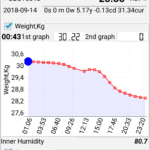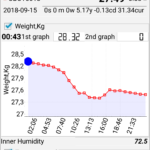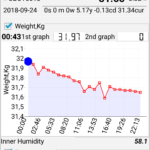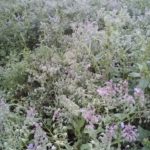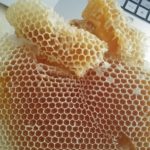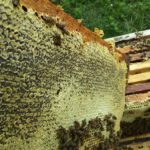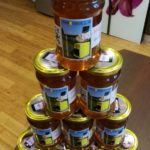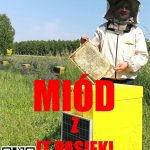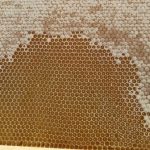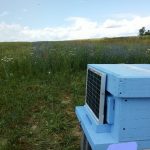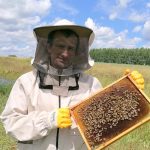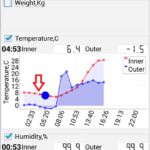On June 1, 2023, the first IT apiary in Ukraine was inaugurated near Kyiv, coinciding with International Children’s Day.
The Smart (IT) apiary consists of 10 identical AmoHive smart hives.
Alongside the opening of this innovative facility, several groundbreaking research studies were initiated:
Research on Bee Colonies. This study examines the development of the most common Apis Melifera bee races in Ukraine: (Apis mellifera carnica, sossimai, carpatica).
Spring Development and Honey Collection Analysis. Researchers are collecting and analyzing relational data on bee colony behaviors during spring development and honey collection for various crops, including acacia, rapeseed, buckwheat, and sunflower.
Swarming and Wintering Adaptation Studies. Additional studies aim to analyze swarming tendencies among different bee races, develop new methods for wintering that address climate change challenges, and optimize IoT systems within smart hives.
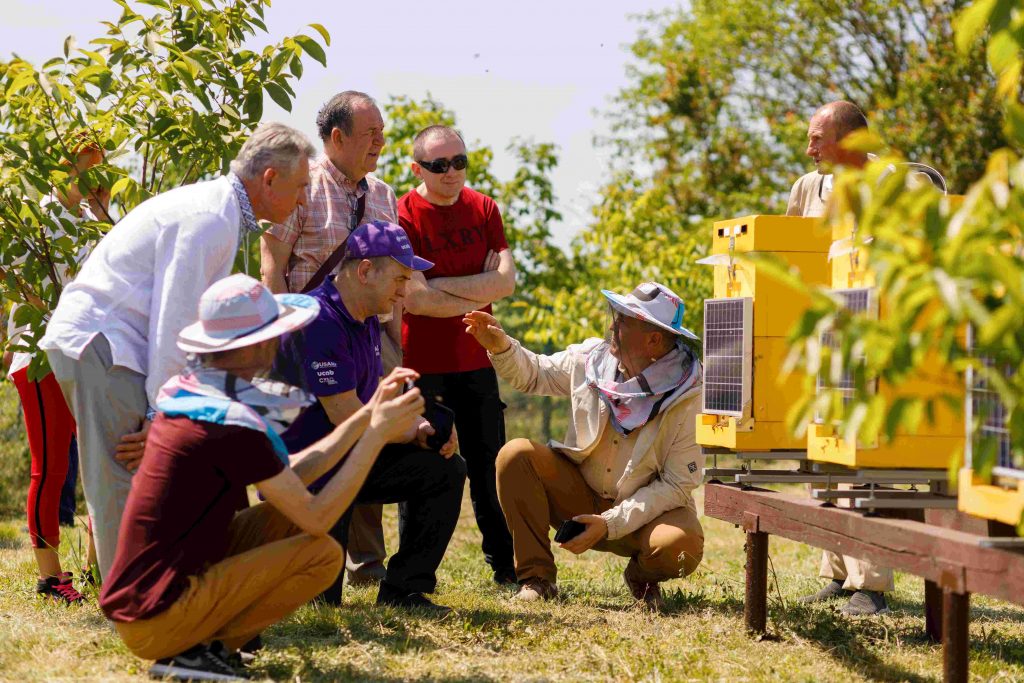
Furthermore, we are proud to announce the launch of a specialized lecture series for Ukrainian children. This course integrates electronics, programming, and beekeeping into a unified preparatory curriculum, inspiring a new generation to explore the intersection of technology and nature.
We invite universities and colleges to cooperate.
July 2023. Scientific Updates
We extend our congratulations to our colleagues and partners at the Université de Moncton in New Brunswick, Canada, for their outstanding achievements and impactful research.
Their recent work, published in the Journal of Experimental Biology on August 23, 2022, highlights the effects of overwintering on North American domesticated honeybees (Apis mellifera).
The study demonstrates how overwintering induces mitochondrial reprogramming while enhancing cellular immunity—an essential finding for understanding bee resilience in challenging climates.
Another noteworthy study, published on July 4, 2023, on the Science X network (Phys.org), explores the protective role of omega-3-rich ahiflower oil against neonicotinoid pesticide toxicity in honeybees.
“Omega-3 oil counteracts toxic effects of pesticides in pollinators, research suggests“
This groundbreaking research suggests that the oil can mitigate mitochondrial damage in pollinators, offering a promising solution to one of the most pressing issues in modern apiculture.
“….Pesticides are a major threat to insect populations and as insects are at the core of ecosystem richness and balance, any loss in insect biodiversity can lead to catastrophic outcome. Imidacloprid, a neonicotinoid pesticide, is one of the world’s most commonly used insecticides. Imidacloprid was banned for outdoor use by the EU in 2018, along with two other major neonicotinoids, but their use continues around the world, including the United States of America….”
“…Neonicotinoids are among the most toxic and the most harmful insecticides. They are used extensively and are very persistent in the environment. Thus, it is practically impossible to prevent honey bees from being exposed and eventually poisoned. A more convenient strategy is to boost the immune system and the metabolism of honey bees to allow them to overcome this chemical intoxication. By improving their respiration through ahiflower oil supplementation, we believe that mitochondria can increase their ATP production and thus improve overall performance of honey bees, as well as their immune system.
The applications for these findings include possible food supplements that could ultimately help to decrease honey bee mortalities caused by pesticides.
The research will be presented at the SEB Centenary Conference 2023, in Edinburgh, UK.
Brussels 7th December 2022.
The European Bee Award 2022 winners are ‘Veitshöchheimer Hempmix’ and “IT Beekeeping by AmoHive”
The European Bee Award has been acknowledging innovative, efficient, and scalable projects that protect pollinators in Europe since it was established in 2014 by the European Landowners’ Organization (ELO) and the European Agricultural Machinery Industry Association (CEMA). The ELO and CEMA were delighted to award this year’s prizes last night to the winners:
- Category ‘Land management practices’: the winner is Veitshöchheimer Hempmix (‘Veitshöchheimer Hanfmix’) by the Bavarian State Institute for Viticulture and Horticulture (LWG). LWG designed a wildflower mixture of 30 predominantly native wild and cultivated annual, biennial and perennial flowering plants that deliver diverse floral resources, as well as biomass that can be used for the production of biogas. This creates an agricultural cultivation system that combines productivity and biodiversity.
- Category ‘Innovative and technological solutions’: the winner is IT Beekeeping by AmoHive. Amohive created a small 3D model of a hive that monitors hive activity (through an electronic scale, temperature sensors, GPS and a solar panel that powers the electronics) and sends information to a server. An algorithm processes the data and decides in which mode the hives should continue to work. The data can be followed in real time in an app and is already used in Poland, Ukraine and Canada.

Gilles Dryancour, Chairman of the CEMA Strategic Committee and member of the Bee Award Jury said: “The European Bee Award is now in its ninth edition, and we are always impressed by the creativity and innovation shown by applicants. The beehive was created over 4500 years ago, and then perfected in 1845. Tonight’s winners Amohive start a new beehive generation, a modern design including sensors measuring temperature and weight, very practical to evaluate the health of bees, and a very useful tool for educational purposes. We thank you for being builders of the future of beekeeping”.
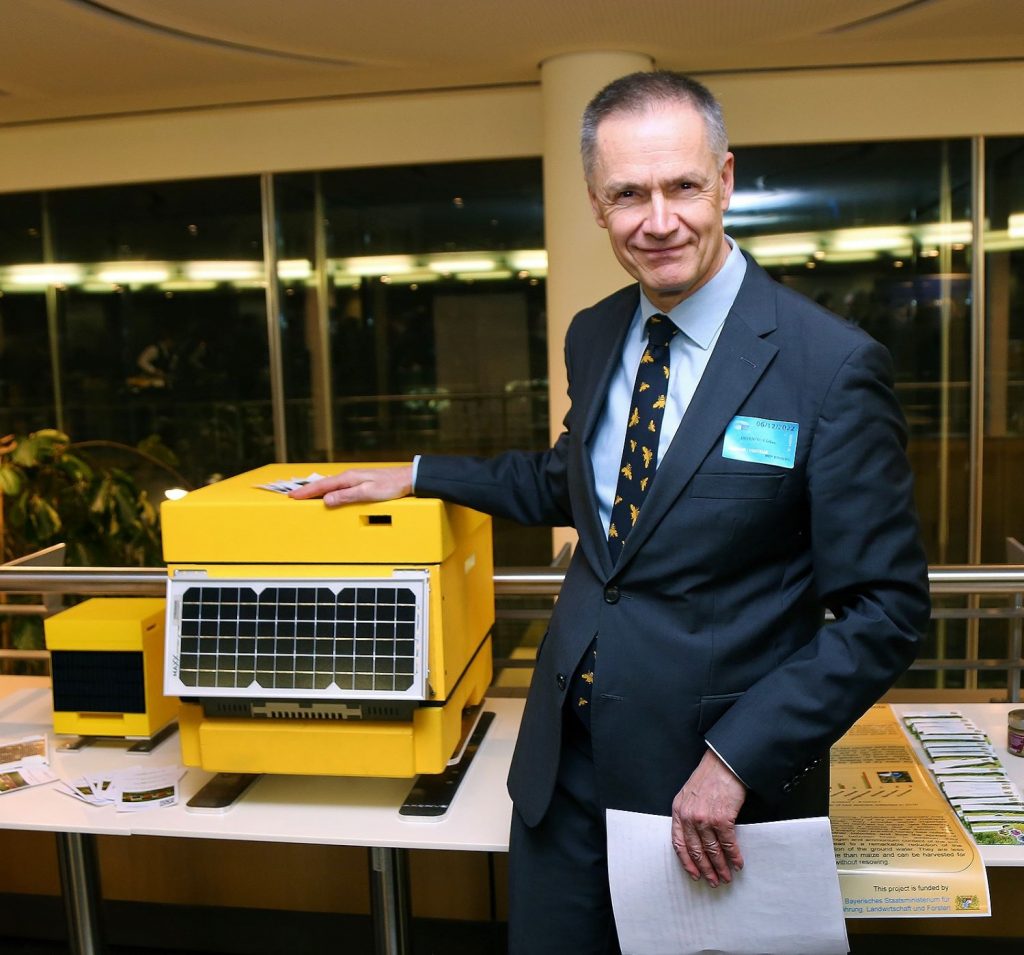
July 2022. IT Apiary by AmoHive
We are very pleased to announce that we have established cooperation with the United Nations Development Program (UNDP in Europe and Central Asia – Istanbul Regional Hub). Our IT Apiary by AmoHive project will be implemented in the Kiev region in Ukraine. We would like to thank our local partner for their engagement and willingness to continue the initiative despite the ongoing war Base «Baltasi»!
Where did the idea for Smart Hives come from? Artificial intelligence helps us in many daily duties. It is an invisible element that intensifies, shapes and organizes our life. We decided to use this instrument in saving bees, and at the same time modernize the profession of beekeeper, and maybe even create a new profession – IT-beekeeper? Why not!
We will install an innovative IT Apiary built only from our AmoHive smart hives, which will generate their own database. The information obtained from it will allow scientists to broaden their knowledge in building the number of bees, in the fight against their diseases and other threats, or in the development of valuable food for our irreplaceable pollinators. Beekeepers will learn to react properly and quickly to changes in the hive, and they will find the necessary tips in the application on their mobile phone.
The IT Apiary by AmoHive project is possible thanks to the financial support of the Ministry of Foreign Affairs of Poland and the Polish Aid through the Polish Challenge Fund modality implemented by UNDP.
This is our first commercial implementation of the product in Ukraine. The fact that we will implement them in a country nicknamed the granary of Europe is a huge challenge for us and a reason to be proud. Here, the bees have a lot of work to do on huge swathes of black soil. We hope that our project will become one of the elements of the reconstruction of the beekeeping and agricultural industry in this country. We are very pleased with the opportunity we have been given. Smart AmoHive hives provide a huge added value for the development of agriculture and the fight against bee diseases – it is worth investing in us! We thank all our local partners. Take care! Stay strong! The future is a free and flourishing Ukraine!
The content of this material does not necessarily reflect the official views of the Ministry of Foreign Affairs of the Republic of Poland or the United Nations, including UNDP, or the UN member states.
- During the 2022 beekeeping season, our team carried out research on the pollination efficiency of blueberries by honey bees.
Blueberry berry yield is extremely dependent on the pollination efficiency of blueberry flowers in spring. Blueberry is one of the most pollinator-dependent berry plants.
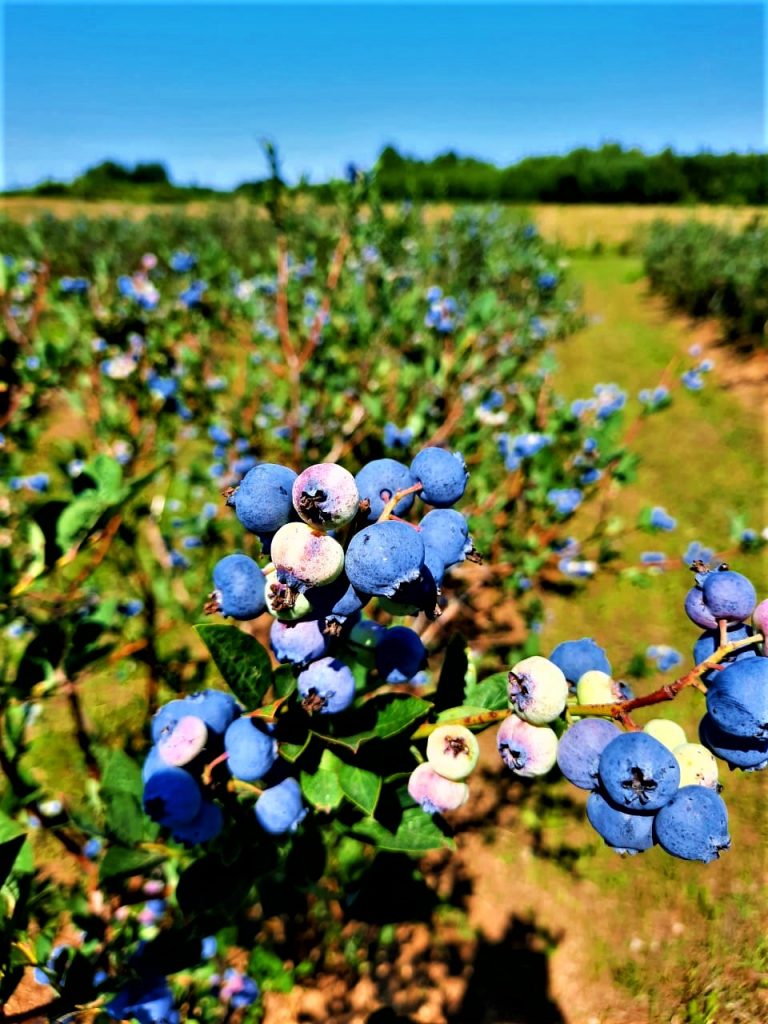
Blueberry yield increases even up to 60% when pollination techniques are properly applied. There are recommendations for the number of beehives per hectare (acre) that are needed to maximize pollination efficiency, the period of pollination, and the strength of the bee family needed for effective pollination.
Bumblebees are known to be the best pollinators for many blueberries, but they are usually insufficient for pollination. Honeybees are more common but less fond of blueberry flowers.
Our team has come up with and tested several know-how to attract bees or “program” bees to pollinate blueberry flowers, and to help bees pollinate blueberry flowers more intensely.
More information about Blueberry and Honey Bees:
Honey Bees and Blueberry Pollination
No Buzz, No Problem: Study Shows How Honey Bees Pollinate Blueberries
- New Partner – new Projects!
We are delighted to welcome our new partner: The World Bee Project!
The World Bee Project CIC is the world’s first private initiative that uses AI and advanced technologies to monitor pollinator decline and biodiversity from a global perspective and find long-term solutions that benefit both nature and people, not one at the expense of the other.
We are planning to implement promising new projects together!
- We have opened another new location in Poland, in the Mazury region. This is a northern region of Poland with a cooler and wetter climate, located close to the Baltic Sea. There are many lakes, forests, a variety of wild flowers and well-developed agriculture. Our new IT by AmoHive apiary location consists exclusively of our own warm and comfortable hives. In the forest, the quality of communication is always much worse than in industrial areas. We programmed and designed our hives in such a way that, despite the poor communication quality, data packets are transmitted without loss. This required a little more solar power, but there were enough sunny days and the electronics worked stably. A lot of data was collected and new patterns of bee behavior were obtained in moderately humid and mild climates.
- December, 2021. It’s already traditional. Participation in the final stage European Bee Award , which sponsored by European Landowners’ Organization (ELO) and European agricultural machinery industry (CEMA).
“In 2021, the European Bee Award competition received 28 applications from 12 different European countries. Last night’s award ceremony gathered over 60 participants: bee-keepers, policy makers, land managers, academia and representatives of the agri-food sector exchanged best practices, while getting inspired by new ideas on how to protect bees and enhance biodiversity in Europe.” You can find the press release here
This time we were with a new small prototype AmoHive (3D model), which is used to teach children about Beekeeping and Information technology.
- March 2021. Smart hive (AmoHive) knows everything about the Carpathian bee!
“Government Courier” learned how to use modern technologies in a family apiary in Transcarpathia.
- Autumn 2020 – Spring 2021, Poland.
AmoHive Polish version:
- July 2020, Germany, Frankfurt am Main.
Our network is growing! AmoHive has been installed in Germany!

- July 2020, Canada, Ontario, Toronto
Bees do not know about Covid-19. They work! The absolute record among Network of Smart AmoHives!
25 kilograms for 8 days, and on some days – 5 kilograms per day!
- June 2020, Poland.
Ours Prototypes should look new! AmoHive in Poland has a new face!
- May 2020, Poland, Krakow. Young and experienced beekeepers are our customers.
- February 2020, Canada, New Brunswick, Moncton.
Interview on the RADIO CANADA (Montreal) with professors Nicolas Pichaud and Luc Boudreau from University of Moncton about their science researching. There are using our three AmoHives.
- December 2019, Belgium, Brussels.
Our Team in Brussels. Final The European Bee Award 2019.
- October 2019, Poland, Warsaw.
The first lessons were successful! The course is called: “Beekeeping and Information Technology for Children”, Warsaw, Poland.
- October 2019. Poland, Warsaw.
The first AmoWorkshop for children of their parents in Poland. “Beekeeper with a smartphone is a new profession.”Our team will transfer knowledge in information technology and beekeeping to the children of Primary School N340 in Warsaw, Poland and their parents as well.
- September 2019, Ukraine, Zaporozhye.
We took part in the “International IT Forum 2019. Digital future”, where the concept of the project “Digital Agenda of Ukraine – 2020” was presented. The AmoHive and small model of the AmoHive, which was created to teach children to “Beekeeping and Information Technology” were successfully presented.
More about Digitalization in Ukraine and Ukrainian Digital News
- August 2019.
We created a small model of the AmoHive. It’ll be used by our colleagues from the school for teach of bilingual children. It works just as well as a real beehive.
- August 2019. In early spring, the Pear and Cornus trees were pollinated by bees. These are quite rare fruit trees, but they also need to be pollinated by bees in the spring.
“..Flowering dogwoods are beautiful year-round making them a stunning addition to an already glorious garden.” – Happy DIY Home
How to Plant and Care for a Dogwood Tree
- July 2019. The first linden honey was collected in 2019 from the apiary in Ontario. You can see that the weight began with a little more than 20 kg in May and now is more than 90 kg. Hive scales tested successfully!
- Honey was collected from Tilia Tree.
- The benefits of Linden and Tilia Honey here.
- June-July 2019. The three AmoHives were installed on the roof, the University de Moncton, New Brunswick, Canada. We hope that the data obtaining from the hives will help in the research of bees. At the same time, bees bring delicious and sweet honey every day. Bees can live in the city. Our beehive is a good solution for Urban Beekeeping as well.
- June 2019. For our AmoHives in Ontario, we bought 3 NUCs from The Honey Bee Research Center’s.
The new season of our AmoHives in Ontario has been started!
- June 2019. Our hives are finding a new beekeepers!
A new model of AmoHive for the Polish market was made. The beehive was given to the experienced and well-known beekeeper of Silesian Region in Poland, Mr. Marian. The hive was testing for pollination of rapeseed/canola.
With the permission of Mr. Marian, the datas of pollination and functioning of this hive can be seen in AmoApp on the smartphone. The nickname is “Marian Siedlec”.
*The presence of pollinators, e.g. honey bees, on canola (cv. O.A.C Triton) increases the germinability of resulting seeds from 83% to 96%.
- Bees on Canola – What are the Benefits? and UNDERSTANDING THE IMPORTANCE OF POLLINATORS TO CANOLA
- History of Canola in Canada. * “….A breakthrough comes when rapeseed samples from Poland are brought to the Saskatoon research branch by visiting scientist Dr. Jan Krzymanski….”
- May 2019. The Facebook page was started.
https://www.facebook.com/amohive/
- May 2019. We sent 3 of our AmoHives to the University of Moncton, New Brunswick, Canada. We hope that our hives will help research health of bees and the causes of their diseases more deeply.
We sent several of our AmoHives to experienced beekeepers, as well one of them to Ontario, Canada. We hope that the join efforts of scientists and experienced beekeepers will provide a design of methods and medicines that can be able to effectively counter of bees
diseases.
- May 2019. Scientific Conference in Kyiv, Ukraine. Our partner in Ukraine, Oleg Klochko, took part in the scientific conference of beekeeping. This conference was held at the HSC Institute of Beekeeping named P.I. Prokopovich. Who is mr. “Prokopovich”? Qui est monsieur “Prokopovich”?
“…Ukrainian beekeeper Prokopovych studied the biology of bee colonies and strove to improve existing methods of beekeeping. His main intention was to develop methods that allowed the least disturbance and damage to bees. ..These efforts resulted in 1814 in the invention of the world’s first frame hive, which allowed an easier honey harvest. Another invention was a wooden partition with apertures passable only by worker bees, now called a queen excluder. It made possible the harvest of pure honey from the frames. Prokopovych’s inventions represented a landmark in the history of beekeeping and marked the beginning of commercial beekeeping…..”
- April 2019. Our hives are finding a new beekeepers.
This time our hive was leased by a breeding queen company. Let me introduce: Family Apiary “Lendel”, Mrs. Maria Lendel. The apiary are specializing in production good quality queens of the APIS MELLIFERA CARPATICA.
We have equipped the hive with additional sensors necessary for the successful control of the production of quality Queen bees. The Apiary have been designed in the traditional and history of beekeeping style.
Please, look at these stylish beehives!
You can read more about beekeeping for women in Ukraine.
- 10 Aprill 2019. We have received UA patent No. 133650 for the utility model “DIAGNOSTICS SYSTEM OF BEE-FAMILY STATE IN A BEEHIVE DIAGNOSTICS ” issued by The State Enterprise “Ukrainian Intellectual Property Institute” (Ukrpatent)
- March-April 2019.
We have given our Amohive to one of the best video bloggers in beekeeping, Mr. Adrey Baskevith. He have recorded film about our hive, which has ben collected more than 80,000 views for the 4 weeks!
As a result, we received a lot of contacts, an orders for delivery our AmoHives, as well, and many interesting suggestions and ideas!
Our beehives will go to the USA, Europe, Israel, Canada, and of course Ukraine and Poland!
- February 2019. “Honey Drink” or old drink “Medovuha”.
Before new season, there is some time for making the old recipe of honey drink yet. This recipe was known since the 18th century and was eventually completely forgotten. We will try to restore it! p.s. 4 frames with honey in honeycombs (honey + propolis + pollen + perga) + 20 liters of fresh birch sap + temperature no more than 13 degrees + no oxygen access + do not open until late autumn! 🙂 Of course …. it would be nice to install sensors for transmitting information about the production process of preparing a drink to smartphone:)
- January 2019. Experienced beekeepers from Eastern Europe recommend giving sweets to bees in the middle of winter. It’s called”candy”. Last year we also gave “candies” and bees successfully wintered. What’s going on inside the hive after bees get food? This year, we gave “candy” to bee colony in Ukraine and the bee colony in Poland. You can see in the screenshots below what happened inside the hive after the “candy”. It was a New Year’s Eve for bees 🙂
AmoHive in Ukraine (apis mellifera carpatica):
AmoHive in Poland ( buckfast bees).
- September 2018. «The need for alerts in autumn (software upgrade)». During several autumn days, we lost one family (AmoHive01 in Poland). Strong bees (Buckfast kind) from AmoHive 18, 19 and 15 took all the honey and destroyed a weaker family.
Online monitoring helped to save the rest of the bee families.
Details can be found in the pictures.

Amohive 01 (victim)
AmoHive 18 (aggressor)
- September 2018. We have finished a new film.
“AmoHive in Poland. September. 2018”
- August 2018. AmoHive in Ukraine. Effects of Pollination early Spring:
- July 2018. AmoHive in Ukraine. Borago and Sunflowers Honey.
Wikipedia about Borage,
Borage Honey,
ALL ABOUT BORAGE,
Wiki about Helianthus,
Sunflower honey,
“An attractive annual herb to grow in your herb garden. Both the flowers and foliage of the plant are edible. Growing borage is also a magnet for pollinators and birds.” – Happy DIY Home
Growing Borage Plant – How to Grow Borage Care Guide
- July 2018. AmoHive in Poland. Souvenirs for our Friends from AmoHive.com.
- July 2018: AmoHive 5 in Ukraine. Breaks a new record.

A very productive day. 9 July, 2018.
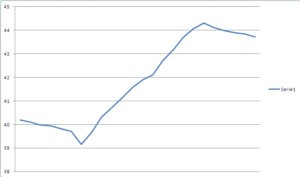
- June 2018. AmoHive in Poland. Creating a new film about next generation of AmoHive:
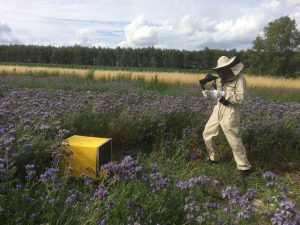
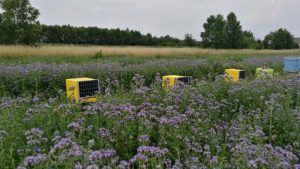
- June 2018: Data Science Summit. Warsaw:
- May, 2018. AmoHive in Poland. AmoHive 9 get an absolute record:
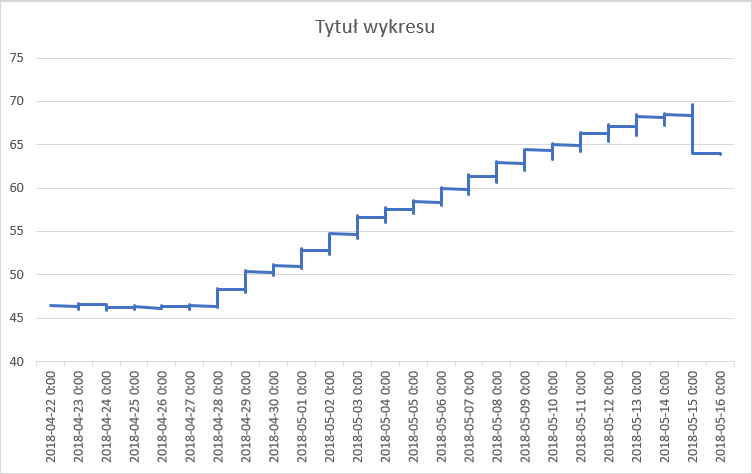
- March 2018: Urban Beekeeping training. Toronto:
- AmoHive in Poland. We can see how our bee family got up after cold winter! 1-2 days of sunny good weather, and we are back to business
- February 2018: Big Data Technology Summit, Warsaw.

- Our testing AmoHives in Poland on Google Maps 🙂

- February 2018: We built and installed new generation of AmoHive of in Canada:
